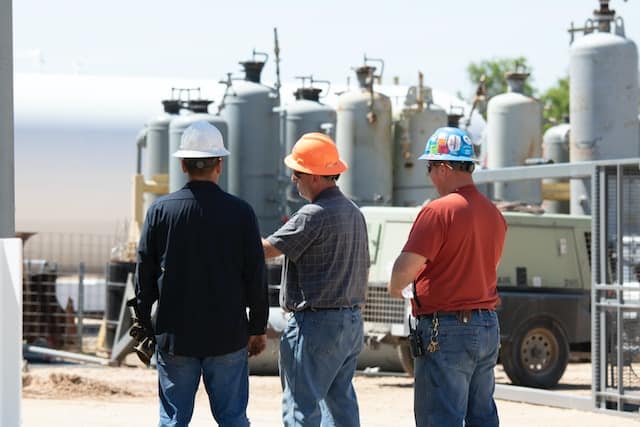Project management—the ability to maintain a realistic project timeframe—is a valuable skill many people aspire for. It’s vital since it not only keeps customers pleased but also ensures that things are completed on time, which helps to develop a favorable reputation. Under-delivery is a big risk in project management; if you establish deadlines that are too tight, your team and yourself will be stressed. However, if the timelines are too flexible, you risk slowing down the project since you won’t be able to move as swiftly as possible. We’ll be going over the importance of setting realistic timelines for your construction project.
What is a realistic timeline?
A realistic timeline is a schedule that describes the numerous activities and milestones of a project. However, that also includes the projected amount of time required to finish each activity. Remember that this is more of a recommendation than a precise plan. Any potential modifications or delays in project execution must be accounted for in the revised schedule.
Why should you have realistic timelines for your construction project?
You can see from the timeline above how quickly things may go wrong if the deadline isn’t met. Potential failure might result from even little setbacks encountered along the way. The project’s timeline might be pushed back as a result of needless course corrections, extra work, and unmet commitments. Having realistic timelines is essential for the construction project.
There are several potential roadblocks that might bring your construction project to a halt. Potential problems might be mitigated by strictly adhering to a stated time range. Achieving on-time and under-budget construction project completion requires outlining in detail the tasks at hand, the needed materials, and the amount of time needed to complete the project.
What factors should be considered when creating a timeline?
Several elements should be considered while developing a realistic timeframe for a building project. These are a few examples:
- Resources: It is critical to assess the resources available to finish the job. According to experts from Verified Movers, having a storage unit to hold your resources will not only help with the construction process but speed it up as well. Resources comprise the tools, materials, and workers required to perform the job.
- Timetable: The timetable should include any further commitments or activities that must be accomplished in order to conclude the project. This includes any holidays, meetings, or other activities that must be accounted for.
- Budget: The timeframe should take into consideration the project’s budget. It is critical to ensure that the project is finished within the allotted budget and that any extra expenditures are considered.
- Permissions: If the project needs any permissions or approvals from local authorities, the timeframe should account for this. If the permissions are not secured on time, the project may be delayed, and extra expenditures may be incurred.
- Weather: The weather may also affect the timeframe of a building project. If the project occurs in an area prone to adverse weather, it is critical to prepare for any delays that may arise due to the weather.

How to set realistic timelines for your construction project
Here are the six essential steps in setting realistic timelines for your construction project:
Divide the work into smaller, more doable pieces
Break the project down into manageable chunks and make a list of all the tasks that need to be completed. Afterward, estimate how long it will take and set a secondary deadline for each phase. This may sound obvious, but you’d be surprised at how often people try to guess how long a task would take instead of breaking it down into parts. This often leads to frustration when the project requires more time.

Learn from former mistakes
Take into account previous initiatives and any setbacks you could have had. Have you ever used the wrong type of cement? Or have you ever had poor safety practices? Make sure these mistakes don’t happen again.
Think about other factors
What else is happening concurrently with the project? You may require a specific day to complete a task, but if that day occurs during a busy season with many competing demands, you may need to set aside more time to complete the job. Other elements that will be present at the same time must also be taken into account.
Communicate with the crew
Maintain open lines of communication with your employees. It’s important to double-check with the people you depend on for help with a project or whose timetables you’re creating to make sure they’re reasonable. You don’t want to get a few weeks into a project before realizing that you underestimated how long it would take to collect the parts you want or that the person you need information from is on vacation during the week you expected they could work on it.

Keep track of everything
Once the project has begun, it is essential to monitor its development in real-time. You can do that by checking off milestones as you go through the project pipeline. Ensure you’re keeping on track with your strategy by checking in on your progress regularly. You should also be meeting any smaller targets you set for yourself. You have a better chance of being prepared for what’s coming if you check in on the job’s progress from time to time.
Start early
And finally, start early, and you’ll be more likely to meet deadlines.
Conclusion
The achievement of a construction project’s goals is directly proportional to the accuracy of its schedule. A realistic timeline in place will provide structure and set expectations for all parties involved in the project. It will help guarantee that tasks are completed on schedule and that the project is completed within its allotted spending limit. It is essential to take into account the available resources, the timeline, the budget, the need for permits, and the possibility of inclement weather when designing a schedule for realistic timelines for your construction project. If the schedule is reasonable, it can help ensure that the project is completed on time and in accordance with industry standards.

